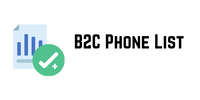Changing or adding a favicon to your website could increase CTR.
What’s that?
The favicon (sometimes called the “favorite icon” or “website icon”) is the small image that appears next to your page when it is opened in a browser tab or added to a user’s favorites list.
But it also appears in the SERP:
If your site doesn’t have a favicon, Google mobile phone numbers will display a placeholder image.
Since it’s one of the first visual elements users see in the SERPs, having a well-designed favicon—rather than a generic image—can make your result more attractive and clickable.
First, make sure your site displays a favicon and that it accurately represents your website or brand. This is usually a version of your logo.
Second, consider optimizing your favicon to make it clearer and more easily recognizable.
9. Improve page loading speed
According to Google, mobile users demographics in your customer database are 32% more likely to abandon a website if its loading time increases by one to three seconds. The same is true for desktop users, who will eventually abandon a page that takes too long to load.
With this in mind, use the Site Audit tool to see if your website has any pages that load slowly. They’ll be listed under ” Topics .”
If you find any, follow the steps below to improve its loading speed:
- Clean the HTML code of that particular page
- Compress your images with a specific tool like Squoosh or TinyPNG
- Enable browser cache
- Use a content delivery network (CDN)
- Limit the number of HTTP requests
- Delete unnecessary media files, such as old or unused images
For example, a CDN would allow you to store copies of your files on servers spread across different regions and countries. This would make them more easily accessible to users located in those regions, which in turn can reduce page load speeds.
If all else fails, consider changing web hosting providers. Some providers optimize their servers for speed, which makes pages load faster.
Similarly, it may be worth upgrading to cloud hosting, dedicated hosting, or virtual private server (VPS) hosting. These options are often faster and more secure than shared hosting.
10. Eliminate keyword cannibalization
If two or more pages on your site rank for the same keyword, they will compete against each other in search results.
In this case, we’re talking about keyword cannibalization, a problem that can affect your site’s performance. Basically, it’s too much of a good thing.
The only exception is when your target keyword addresses different search intents.
For example, you might have one page designed for customers who want to learn more about the “best classical guitars,” and another page for those who want to buy one.
But if both pages satisfy the same search intent, Google may devalue the page you want to prioritize. This practice can also dilute your anchor text and links, making it harder to compete with other sites targeting the same keyword as you.
What you can do about this is perform a website audit and then decide which page you want to keep. Alternatively, merge the pages into one, such as “Your Ultimate Guide to the Best Classical Guitars.”
Pro Tip: Use Semrush’s position tracking tool to identify keyword cannibalization that needs addressing.
More ways to increase organic traffic
Improving your site’s organic CTR is a small but important step toward increasing your site’s overall organic traffic.
But don’t stop there.
Read our complete guide on How to Increase Organic Traffic to learn additional tactics and advanced strategies to grow your website and business.
In the meantime, keep experimenting with the Keyword Magic tool to discover new search terms related to your business.
Use them to optimize your blog posts, web pages, meta descriptions, and title tags so you can rank higher in the SERPs.
Don’t forget to use Semrush’s Organic caseno email list Research tool to see what’s working best for your competitors.
Next, refine your SEO strategy to rank for new keywords and gain more exposure online.
